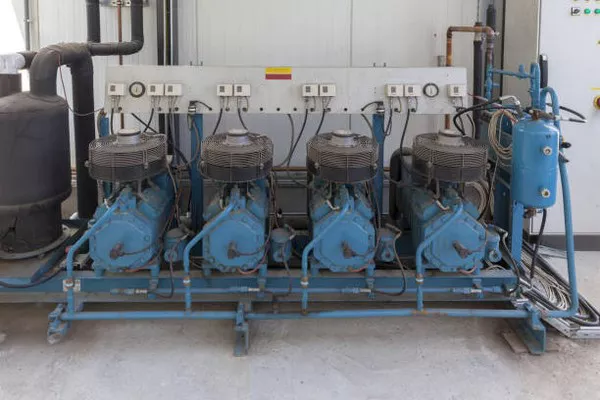Power outages can be a major inconvenience, and in extreme cases, they can even pose a health risk, particularly in areas with scorching summer temperatures. For homeowners with central air conditioning systems, ensuring that their units remain operational during power outages is essential. This is where generators come into play. However, selecting the right generator size for your central air conditioning system is a critical decision. In this article, we will explore the factors to consider and the guidelines for choosing the appropriate generator size to keep your central air running smoothly when the grid goes down.
Why Is Generator Sizing Important?
When it comes to generators, size matters. An undersized generator won’t be able to meet the power demands of your central air conditioner, causing it to malfunction or not work at all. On the other hand, an oversized generator can be costly and inefficient to run, leading to unnecessary expenses in terms of fuel and maintenance. Therefore, finding the right generator size is crucial for maintaining the comfort and safety of your home during power interruptions.
Factors to Consider
To determine the correct generator size for your central air conditioning system, you need to take several factors into account. Here are some key considerations:
Central Air Conditioning System Capacity: The cooling capacity of your central air conditioner is measured in British Thermal Units (BTUs) per hour. You can find this information on the unit’s nameplate or in the manufacturer’s documentation. Make sure to consider the highest capacity, typically during the hottest months, to size the generator appropriately.
Starting Surge or Load: Central air conditioning systems draw a significant amount of power when they first start up. This starting surge can be several times the unit’s continuous running load. To ensure your generator can handle this surge, it’s essential to factor it into your generator size calculation.
Other Essential Appliances: Consider what other appliances or systems you want to power during an outage, such as lights, refrigerators, or medical equipment. Add their power requirements to the central air conditioning system’s load to determine the total power demand.
Fuel Type: Generators come in various types, including gasoline, diesel, natural gas, and propane. Your choice of fuel type may influence the generator’s size, efficiency, and availability during power outages.
Elevation and Temperature: Higher altitudes and extreme temperatures can affect the generator’s performance. Be sure to account for these environmental factors in your calculations.
Generator Sizing Guidelines
To determine the right generator size for your central air conditioning system and household needs, follow these guidelines:
Calculate the Continuous Load: Begin by calculating the continuous load, which is the power required to keep your central air conditioner running under normal conditions. This load is typically measured in kilowatts (kW) and can be found in the AC unit’s documentation. If it’s given in BTUs, convert it to kW.
Determine the Starting Surge: Central air conditioners have a starting surge, often referred to as “locked rotor amps” (LRA) or “inrush current.” This surge can be 2-3 times the continuous load. Calculate the starting load in kW.
Include Other Essential Loads: Add the power requirements of other essential appliances and systems you want to power during an outage to the continuous and starting loads. Be sure to include lights, refrigerators, and any medical equipment.
Calculate Total Generator Capacity: Sum up all the loads calculated in steps 1, 2, and 3 to determine the total generator capacity required. This will be your minimum generator size to ensure all essential systems run smoothly.
Choose a Generator with Sufficient Capacity: When selecting a generator, round up to the nearest available generator size that exceeds the total capacity calculated in step 4. It’s always better to have some extra capacity to accommodate future needs or unexpected power surges.
Consult a Professional: If you are unsure about your calculations or need assistance in selecting the right generator size, consider consulting with a professional electrician or generator specialist. They can assess your specific requirements and recommend an appropriate generator size.
Case Study: Sizing a Generator for Central Air
Let’s walk through a hypothetical example to illustrate the process of sizing a generator for a central air conditioning system:
Continuous Load: Suppose your central air conditioner has a continuous load of 5 kW.
Starting Surge: The starting surge for this AC unit is estimated at 15 kW.
Other Essential Loads: You want to power a refrigerator (1 kW), lights (0.5 kW), and medical equipment (0.5 kW) during an outage.
Total Generator Capacity: Add up the continuous load, starting surge, and other essential loads: 5 kW (continuous) + 15 kW (starting) + 1 kW (refrigerator) + 0.5 kW (lights) + 0.5 kW (medical equipment) = 22 kW.
In this case, you would need a generator with a capacity of at least 22 kW to ensure that your central air conditioner, along with the other essential loads, can operate without any issues.
Conclusion
Choosing the right generator size for your central air conditioning system is crucial for maintaining comfort and safety during power outages. By considering the central air unit’s capacity, starting surge, and other essential loads, you can accurately determine the generator size you need. It’s important to select a generator that not only meets your current requirements but also provides a buffer for future needs and unexpected power surges. If you are unsure about the sizing process, consult with a professional to ensure that you make the right choice for your home. A well-sized generator will keep your central air running smoothly and provide peace of mind during power interruptions.

